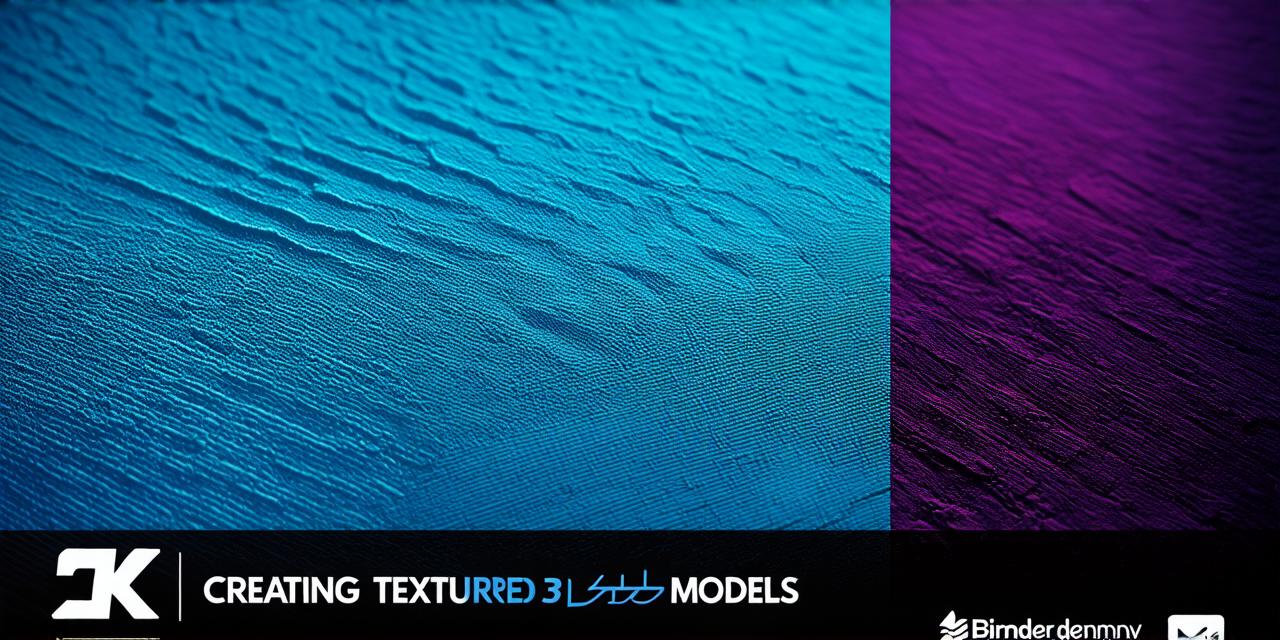Introduction:
Creating textured 3D models is an essential part of game development. It enhances the visual appeal and immerses players in a realistic environment. In this article, we will explore how to create textured 3D models for Unity games using Blender on Udemy. We will also discuss the benefits of using Blender for this purpose and provide tips on optimizing your workflow for maximum efficiency.

Benefits of Using Blender:
Blender is a free and open-source 3D modeling software that offers an extensive range of features, making it a popular choice among game developers. It has a user-friendly interface and supports multiple file formats, including OBJ, FBX, and Collada. Additionally, Blender’s versatility enables users to create not only 3D models but also animations, textures, and simulations.
Getting Started with Blender:
To begin creating textured 3D models for Unity games using Blender on Udemy, you will need a computer that meets the system requirements for Blender. You can download the software from the official website and install it on your machine. Once installed, open Blender and familiarize yourself with the interface.
Creating a 3D Model in Blender:
To create a 3D model in Blender, start by selecting the appropriate mesh object for your game. You can find pre-made meshes on various online marketplaces or create them from scratch using Blender’s extensive library of tools. Once you have selected your mesh, add it to the scene and adjust its size and position as needed.
Texturing Your 3D Model:
The next step is to texture your 3D model. Textures are images that give objects in a 3D scene a visual appearance. You can create textures using various software or purchase pre-made ones from online marketplaces. To apply a texture in Blender, select the object you want to texture and go to the Materials tab in the Properties window. From there, you can add a new material and assign it to your object.
Exporting Your 3D Model:
Once you have created and textured your 3D model in Blender, you need to export it for use in Unity. To do this, go to File > Export > FBX (or any other format that is compatible with Unity). In the export settings, make sure to select the appropriate mesh and material for your object. Additionally, you can adjust the scale and orientation of your model as needed.
Importing Your 3D Model into Unity:
To import your 3D model into Unity, go to Assets > Import Package or Drag and Drop the FBX file into the project window. In the Import Settings window, make sure to select the appropriate mesh and material for your object. Additionally, you can adjust the scale and orientation of your model as needed.
Tips for Optimizing Your Workflow:
To optimize your workflow when creating textured 3D models for Unity games using Blender on Udemy, consider the following tips:
- Use reference images: When creating 3D models, use reference images to guide your work. This will ensure that your model accurately represents the intended design.
- Break down complex objects: If you are working with a complex object, break it down into smaller, more manageable pieces. This will make it easier to create and texture each piece individually.
- Use modular design: Consider using modular design when creating 3D models. This involves breaking down an object into smaller, interchangeable parts that can be reused in other projects.
- Export optimized models: When exporting your 3D model, make sure to optimize it for use in Unity. This includes reducing the number of polygons and textures to improve performance.
FAQs:
1. What software do I need to create textured 3D models for Unity games?
You will need a computer that meets the system requirements for Blender and Unity. Additionally, you may need to purchase or create textures using other software.
2. How do I texture my 3D model in Blender?
To texture your 3D model in Blender, select the object you want to texture and go to the Materials tab in the Properties window. From there, you can add a new material and assign it to your object.
3. How do I export my 3D model for use in Unity?
To export your 3D model for use in Unity, go to File > Export > FBX (or any other format that is compatible with Unity). In the export settings, make sure to select the appropriate mesh and material for your object.
4. How do I import my 3D model into Unity?
To import your 3D model into Unity, go to Assets > Import Package or Drag and Drop the FBX file into the project window. In the Import Settings window, make sure to select the appropriate mesh and material for your object.
5. How do I optimize my workflow when creating textured 3D models?
To optimize your workflow when creating textured 3D models, consider using reference images, breaking down complex objects into smaller pieces, using modular design
